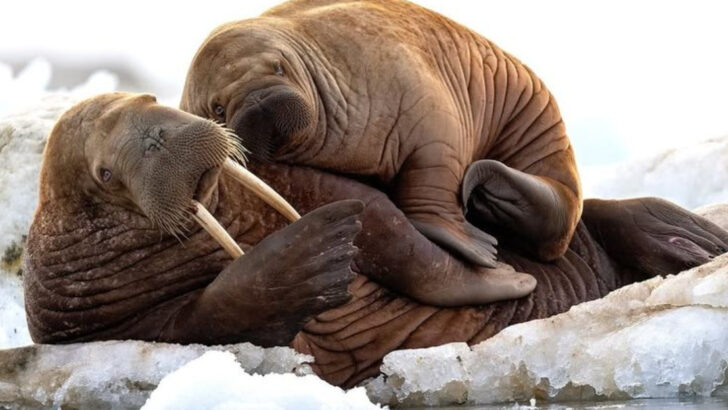Think walruses are just big, blubbery sea creatures? Think again.
These fascinating animals are full of surprises that will leave you in awe. From their unique tusks to their playful personalities, walruses are far more than just a giant presence on the ice.
Beneath that hefty exterior lies a world of skill and adaptability that’ll make you rethink how you see them. These majestic marine mammals have incredible survival tactics, unmatched strength, and surprising intelligence that will have you amazed.
Get ready to dive into the wild world of walruses and uncover facts you never knew! Whether you’re already a fan or a first-timer, these 15 facts will make you appreciate these incredible creatures even more.
Impressive Tusks
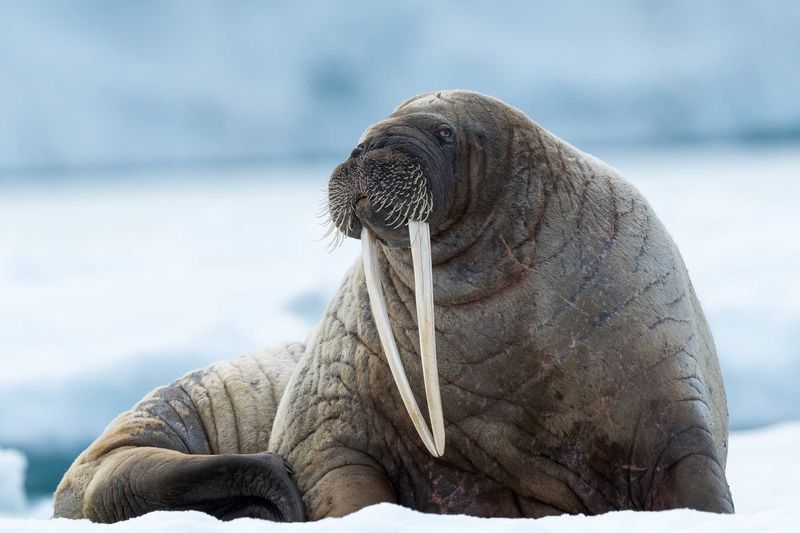
The walrus is renowned for its magnificent tusks, which are elongated canine teeth. Both males and females have these tusks, though the males’ are typically longer. Tusks serve multiple purposes: they help walruses pull themselves out of the water and onto ice, establish dominance within social hierarchies, and provide defense against predators.
These ivory tusks can grow up to three feet long, making them a striking feature of these marine mammals. Admiring their grandeur, one can truly appreciate the evolutionary marvel that these tusks represent.
Whisker Sensitivity
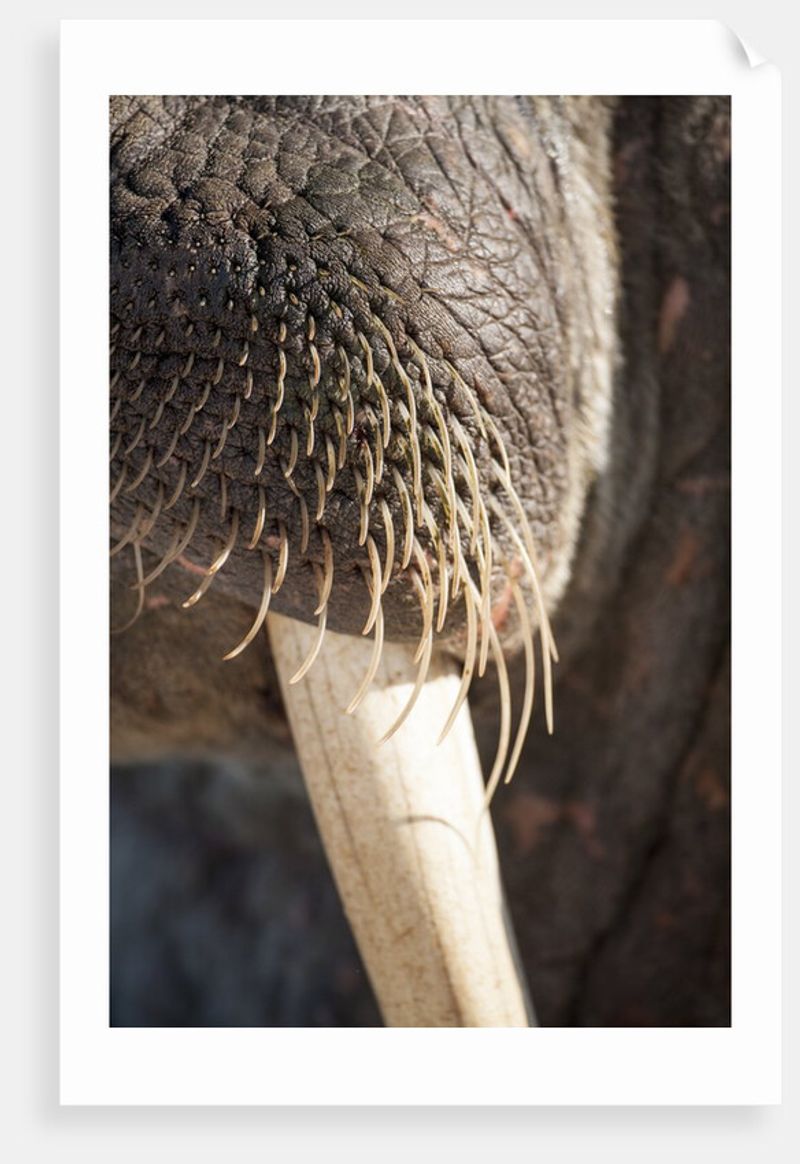
Walruses possess a remarkable set of whiskers, or vibrissae, which are not just for show. These sensitive whiskers play a crucial role in helping walruses detect food on the ocean floor. Each whisker is packed with nerve endings, allowing the walrus to sense the smallest movements and textures in the water.
This keen sensory adaptation is vital for their survival, especially in the murky depths where visibility is limited. It’s a testament to nature’s ingenuity, providing the walrus with tools to thrive in its challenging environment.
Social Creatures

Walruses are highly social animals and often gather in large groups called herds. These herds can consist of up to several thousand individuals. Social interactions play a significant role in their lives, aiding in mutual protection and warmth.
Within these groups, walruses communicate through vocalizations and physical gestures. Observing their camaraderie, one can see the importance of community in the wild. This social structure ensures safety and fosters the strong bonds that are critical for survival in the harsh Arctic climate.
Diving Depths

Walruses are excellent divers, often plunging to depths of up to 100 meters in search of food. Their ability to slow their heart rate enables them to conserve oxygen during these deep dives, a trait known as bradycardia. This physiological adaptation allows them to remain submerged for as long as 30 minutes.
Exploring the ocean depths, walruses forage for clams, mollusks, and other sea invertebrates, showcasing their prowess as hunters of the sea floor. Their diving skills are a marvel of adaptation, allowing them to thrive in their aquatic environment.
Arctic Giants

Walruses are true giants of the Arctic, with males weighing up to 1,700 kilograms. This massive size is due in part to their thick layer of blubber, which provides insulation against the frigid temperatures. Their bulk not only helps retain heat but also acts as a reserve of energy during times when food is scarce.
This sheer size can be intimidating, yet it’s essential for survival in the cold extremes of their habitat. The walrus’s impressive bulk is a testament to its adaptation to the harsh Arctic conditions.
Vocal Communicators
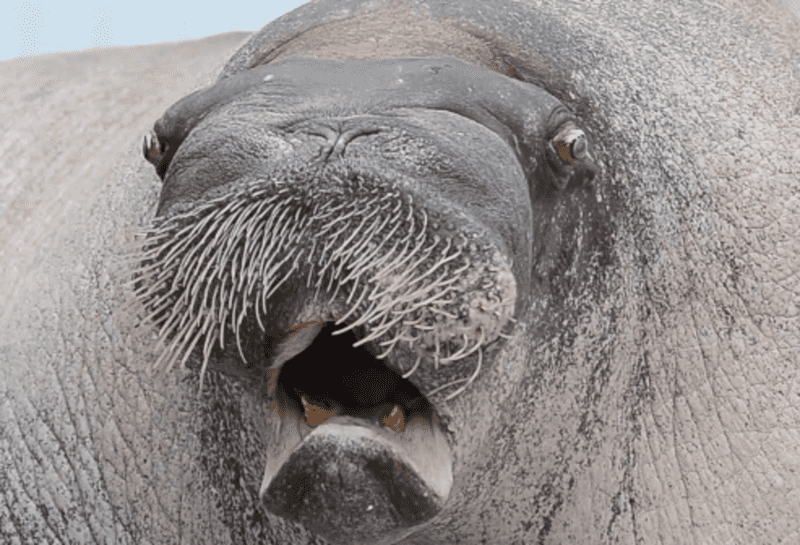
Walruses are known for their diverse range of vocalizations, which they use to communicate with each other. Their sounds can include barks, grunts, and even whistles, each conveying different messages within the herd. These vocal signals play a crucial role in maintaining social bonds and coordinating group movements.
In the vast and often silent Arctic, these vocalizations stand out as a vibrant form of interaction. Their ability to communicate so effectively is a key aspect of their social structure, emphasizing the importance of sound in the animal kingdom.
Unique Flippers
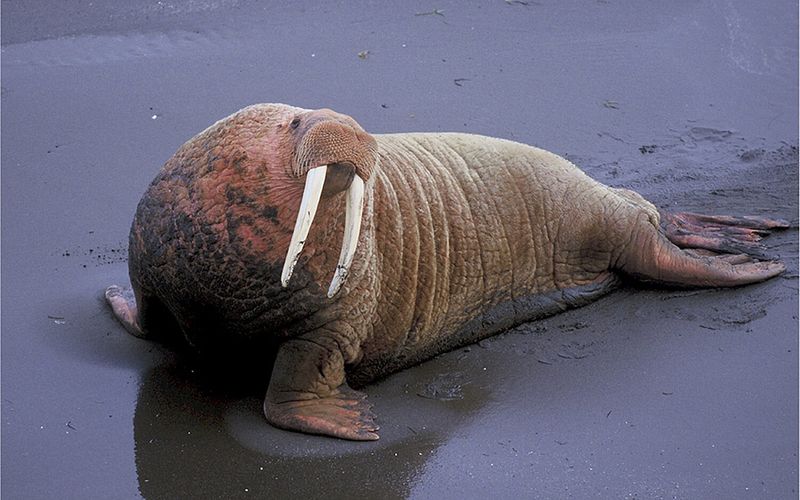
The walrus’s flippers are unique adaptations that allow it to navigate both land and sea with ease. These flat, broad flippers are not only perfect for swimming but also enable walruses to ‘walk’ on land by rotating under their bodies, supporting their weight.
This dual functionality is vital for their lifestyle, as they frequently move between the icy waters and frozen shores. It’s a fascinating example of evolutionary design, allowing them to master both their aquatic and terrestrial environments.
Clam Connoisseurs

Walruses are true clam connoisseurs, with a diet that primarily consists of these bivalves. Their powerful suction ability allows them to extract clams from their shells with incredible efficiency. This technique involves creating a vacuum with their mouth, sucking the flesh out while leaving the shell behind.
This culinary skill is crucial for their survival, providing a rich source of nutrition in the Arctic’s challenging environment. Their expertise in finding and consuming clams highlights their specialized adaptation to the sea floor ecosystem.
Long-lived Mammals
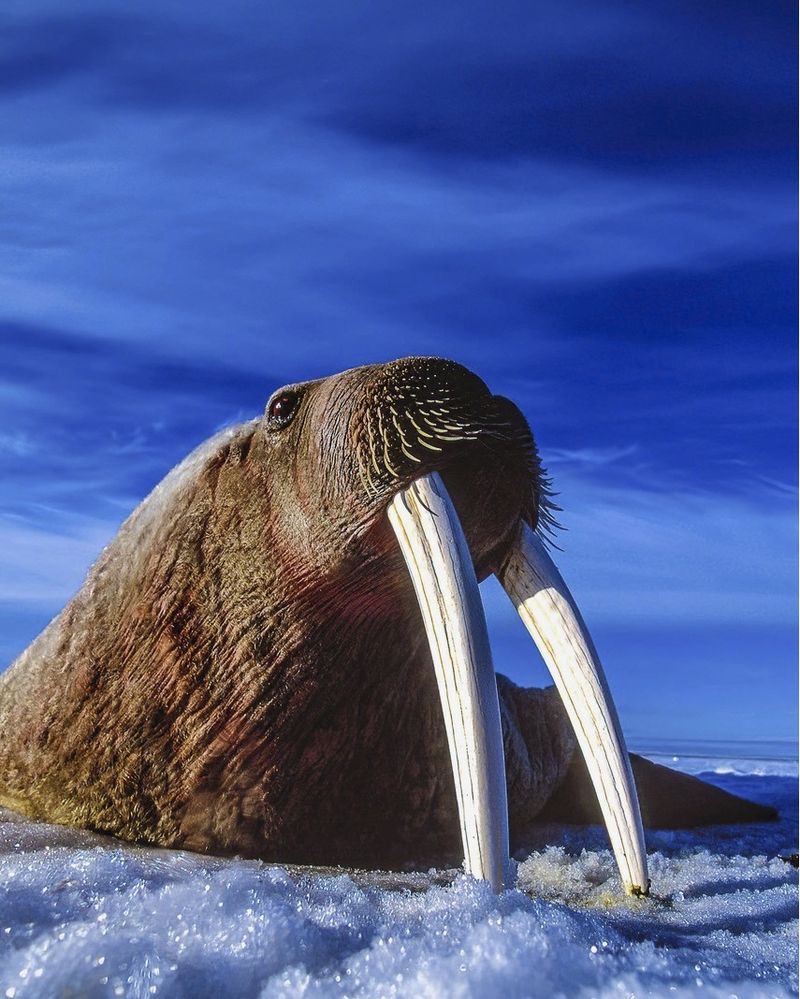
Walruses are among the longest-lived marine mammals, with some reaching up to 40 years of age. Their longevity is attributed to their robust health and ability to thrive in the harsh Arctic conditions. As they age, walruses often show signs of wear, such as worn tusks and scars from past skirmishes.
Witnessing an old walrus is like reading a story etched in its skin, each mark a testament to a lifetime spent in the icy embrace of the Arctic. Their extended lifespan allows them to pass on knowledge and experience to younger generations, ensuring the survival of the herd.
Thick-skinned Survivors

The walrus’s skin is incredibly thick, providing essential protection against the cold and predators. This tough hide can be several centimeters thick, especially on the neck and shoulders, where males often engage in battles for dominance.
This leathery armor is not just for defense; it also helps minimize heat loss, maintaining the walrus’s body temperature in freezing conditions. Their skin is an extraordinary adaptation, enabling them to endure the relentless chill of their Arctic home.
Nomadic Lifestyle
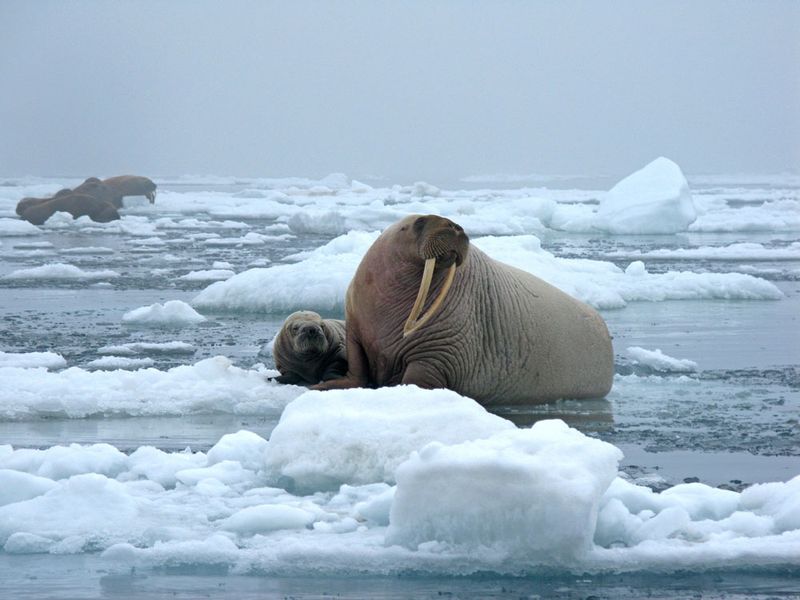
Walruses lead a nomadic lifestyle, constantly on the move in search of food and suitable resting places. They follow the seasonal shifts in ice cover, migrating to areas where they can hunt effectively and haul out onto the ice.
This constant movement is a survival strategy, ensuring they have access to the resources they need throughout the year. Their migratory patterns are a testament to their adaptability and resilience in the ever-changing Arctic landscape.
Curious Calves
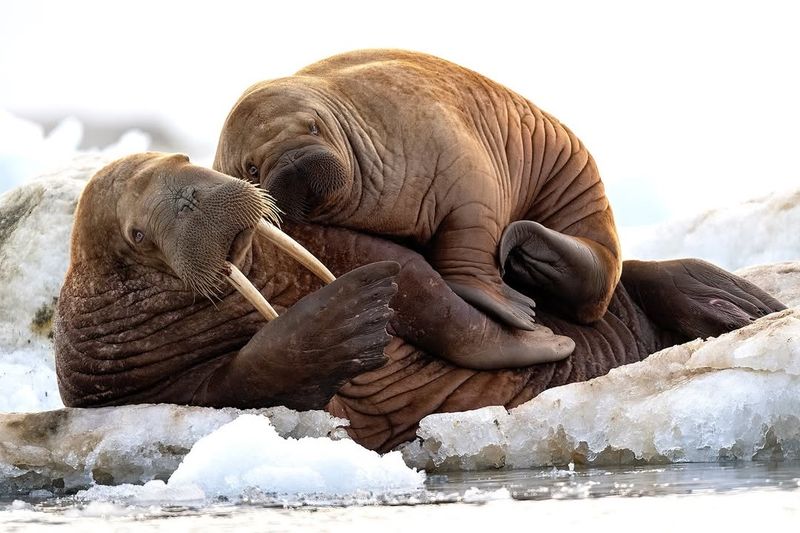
Walrus calves are born curious and playful, often seen swimming alongside their mothers. These young ones learn essential survival skills from their parents, including how to dive, find food, and interact socially within the herd.
Their playful nature is a delight to observe, offering a glimpse into the nurturing environment that walrus mothers provide. The bond between mother and calf is strong, ensuring that the young walrus grows into a capable and independent adult.
Cultural Significance
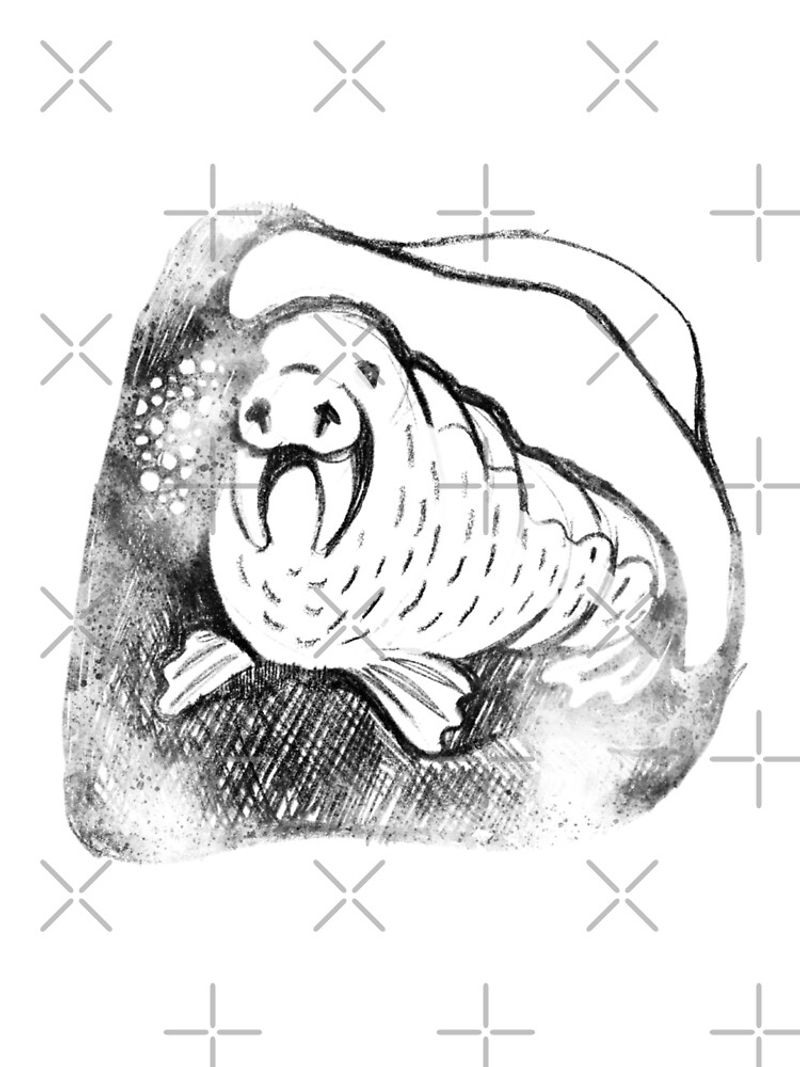
Walruses hold significant cultural importance for Indigenous Arctic communities, such as the Inuit. They have been hunted for thousands of years, providing vital resources like meat, blubber, and ivory for tools and art. These communities have deep respect and knowledge of walruses, often reflected in their art and traditions.
This cultural connection highlights the balanced relationship between humans and nature. The walrus is not just an animal but a symbol of survival and tradition in the Arctic world.
Playful Nature
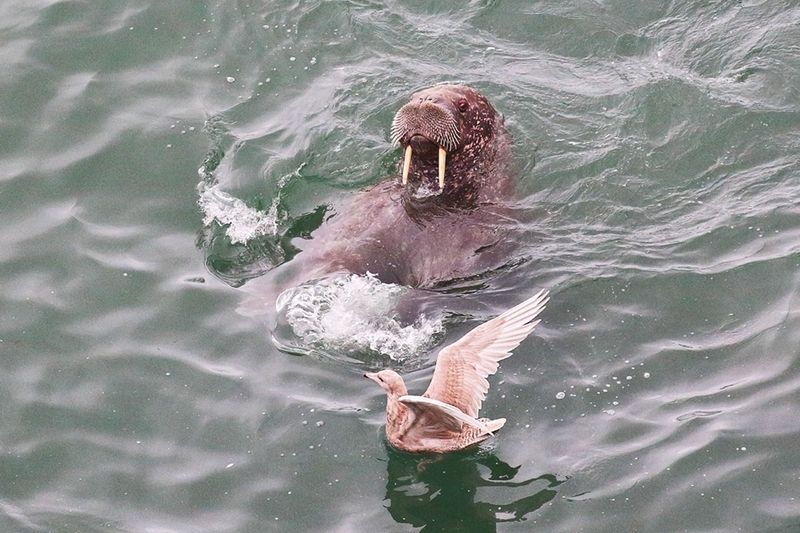
Walruses are known for their playful nature, often engaging in social interactions that resemble games. Whether frolicking in the water or playfully wrestling on ice, these behaviors strengthen social bonds within the herd.
Their playful antics are not just for fun; they serve as important learning experiences, helping young walruses develop the skills needed for adulthood. This playful spirit is a charming aspect of their personality, bringing warmth and vitality to the frozen Arctic.
Historical Creatures
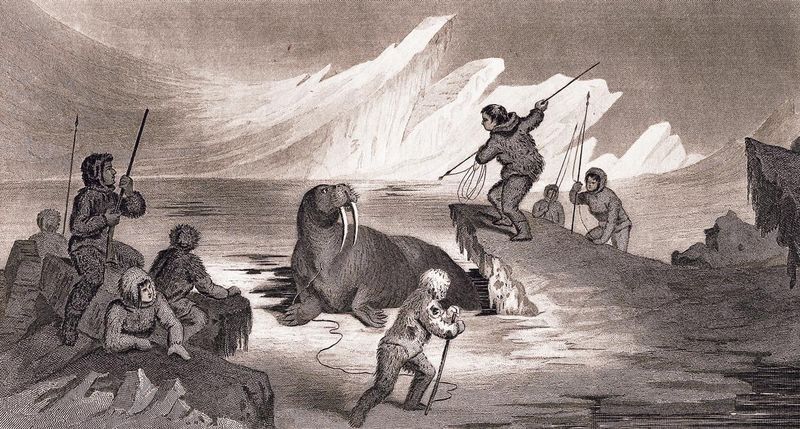
Walruses have been part of human history for centuries, appearing in ancient folklore and explorers’ tales. Early naturalists and sailors often included walrus descriptions in their logs, intrigued by their unique appearance and behaviors.
These historical accounts provide valuable insights into human interaction with walruses over time. They remind us of a bygone era when the mysteries of the Arctic were slowly being unveiled by brave explorers.

